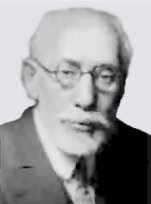|
|

|
|
Friedrich S. Krauss (1859 -1938) an Austrian ethnologist, coined the term „paraphilia“. He collected erotic folklore in the Balkans, edited the journal “Anthropophyteia” (1904-1913) and was co-editor of the first Journal of Sexology (Zeitschrift für Sexualwissenschaft), founded by Magnus Hirschfeld in 1908.
|
|
|
When the medical profession tried to find a scientific, i.e. purely descriptive, morally neutral expression to replace the judgmental “perversion”, “aberration”, and “deviation“, it finally adopted the term ”paraphilia” (gr. para: beside, and philia: love). However, from the standpoint of logic, this is no improvement: A paraphilia remains, by definition, a second-rate love. The term still assumes and implies the existence of a "real", "true","natural", and "correct" love (philia) which has sisters of minor rank standing beside, behind, or below it, just as the paramedical personnel stands behind or below the "real" doctor. Scientifically speaking, this is an unwarranted assumption. Those who use the term imply that they know the “true” meaning and purpose of sexual behavior, and they claim the authority to correct whatever falls short of what they consider ideal. At best, they are ideologues without being aware of it.
Indeed, none of the various definitions of “paraphilia” meets even the most basic standard of objectivity. They are either moralistic and naïve or inexcusably vague or even tautological. For example: Some writers speak of “sexual behavior that is atypical and extreme”, others refer to “arousal by sexual objects or situations which may interfere with the capacity for reciprocal affectionate sexual activity”. Still others state that “paraphilias are sexual impulse disorders characterized by behaviors that are considered deviant”, or they proclaim categorically that “paraphilias are psychiatric disorders that are manifested as deviant sexual behavior”. The last two definitions are tautological and especially meaningless (“paraphilias are disorders and therefore deviant”). This is like saying that “an extramarital affair manifests itself in adultery” or that “poverty is due to a lack of money”. Such empty formulas are useless in any scientific discourse.They explain nothing and are open to all sorts of arbitrary interpretations. However, the other definitions are not much better: Many human behaviors are “atypical” without indicating a psychiatric disorder: Climbing very high mountains, riding a bicycle around the world, entering a monastery and taking a vow of silence, collecting porcelain thimbles, and many others. The word “extreme” is a relative term which changes its concrete meaning from one speaker and context to another. “Reciprocal affectionate sexual activity” is a cultural ideal of the modern Western middle classes and by no means universal, either historically or geographically. On the other hand, many so-called paraphilic activities can very well include reciprocity and affection. In short, the term “paraphilia” is just as ideological and prescientific as those it was meant to replace.
|